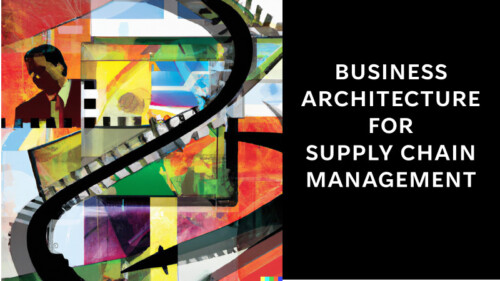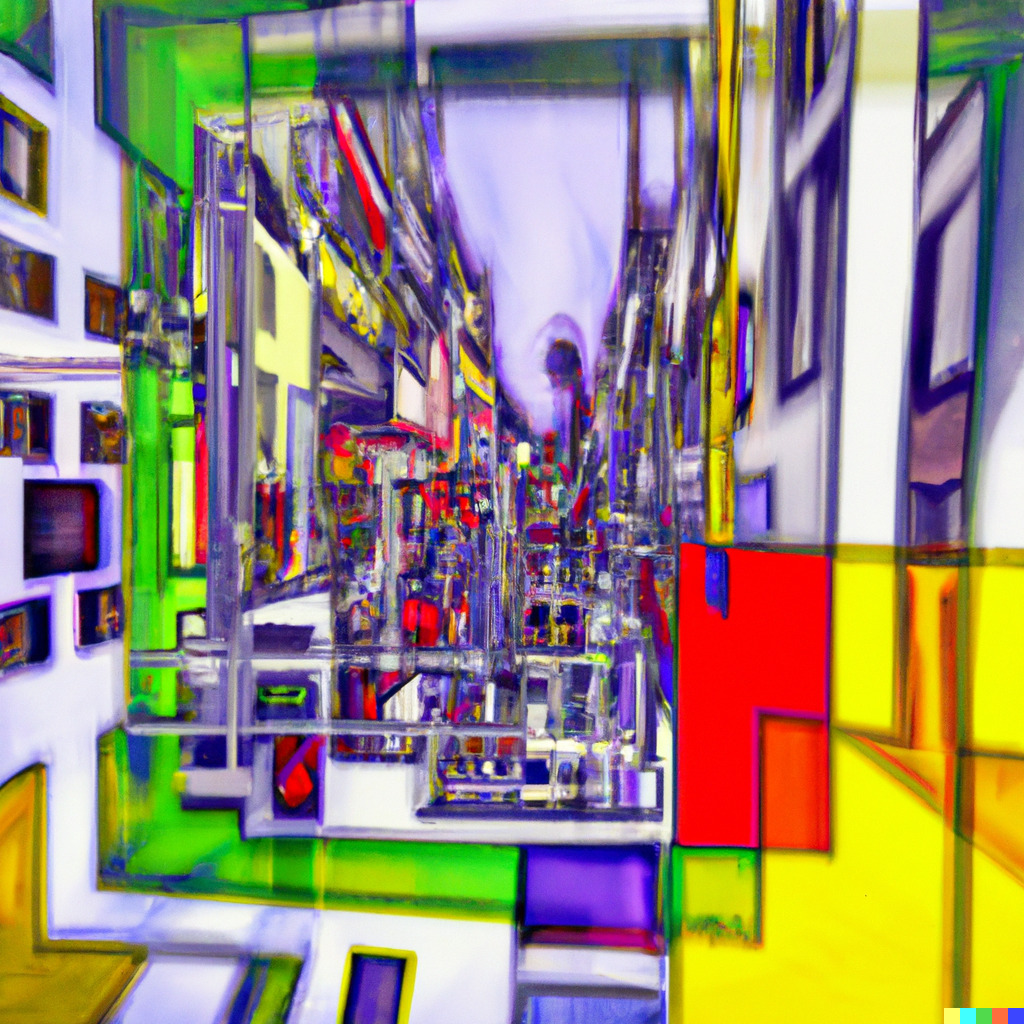
Building Blocks: A Business Architecture Fable
Building Blocks is a business architecture fable that follows Mary Mapper, a business architect, and her adventures in defining enterprise business architecture for GiantMegaCorp.
The Beginning
In the thriving heart of New York City’s business district, a woman named Mary Mapper found herself at the threshold of an impressive building – the headquarters of GiantMegaCorp. Her heart pounded with anticipation as she pushed open the glass doors, but her face revealed nothing but calm resolve. She was no stranger to taking the helm in challenging situations, and this time was no different.
Mary was a seasoned Business Architect with more than two decades of experience under her belt. Her journey began at the Massachusetts Institute of Technology, where she majored in Computer Science with a minor in Business Administration. Following her academic pursuits, she immersed herself in the technology sector, donning multiple hats – software developer, project manager, and eventually, business analyst. This eclectic blend of roles gave her a 360-degree view of business operations, priming her to step into the world of business architecture.
She was a strategist and a visionary, able to decipher complex business needs and transform them into actionable plans. Her reputation for transforming organizations with effective business architectures had attracted the attention of GiantMegaCorp, a multinational conglomerate that needed her expertise.
GiantMegaCorp was a leviathan of an entity, with its tentacles spread into several industries – from consumer electronics to energy. While its sheer size and market presence were impressive, they also posed unique challenges. Each business unit functioned almost as an independent entity with its own set of processes, structures, and cultures. This lack of cohesion was hampering efficiency and, consequently, the company’s profits. A visionary like Mary Mapper needed to stitch together a unified, coherent business architecture.
As Mary looked out of her new office window, taking in the sprawling urban jungle, she knew that her journey at GiantMegaCorp would not be easy. She was tasked with the monumental job of establishing a business architecture practice, assembling a team, and developing essential artifacts and deliverables. It was akin to constructing a colossal bridge that would connect the varied facets of the company into a cohesive whole. A task that would take over a year to complete.
The year ahead promised a voyage filled with discovery, challenges, and transformation. From building a dedicated team to deploying a new business architecture, Mary would be the fulcrum around which GiantMegaCorp’s business future would revolve. This is the story of her adventure, a tale that would redefine business architecture and the destiny of GiantMegaCorp.
So, sit back and journey with us as we unravel Mary’s extraordinary expedition – a path marked by tireless efforts, strategic breakthroughs, and triumphant successes. Welcome to the world of Mary Mapper, a Business Architect. This is her story.
The Opportunity
One brisk morning, as Mary Mapper was sorting through her mail, she noticed an envelope bearing the distinct logo of GiantMegaCorp. The sight of it sparked curiosity and a sense of thrill. As she gently ripped open the envelope, her eyes scanned a letter that outlined a proposition of interest – an opportunity to take the lead on a challenging yet intriguing business architecture project.
GiantMegaCorp had been looking for a Business Architect of her caliber for quite some time. They knew they needed a leader, a navigator who could chart a course through their business terrain, a complex, multi-layered, and somewhat fragmented terrain. Mary’s reputation as a master architect who had shaped successful business models had reached their ears, and they were eager to bring her on board.
A series of rigorous interviews and discussions followed. Finally, a panel of GiantMegaCorp’s highest-ranking executives, including the formidable CEO, probed into Mary’s capabilities. “Mary,” began the CEO, in a commanding and expectant voice, “Our corporation is like a mega ship that’s veered slightly off course. We need you to help us correct the course and steer us toward efficiency. Do you think you’re up to the task?”
To this, Mary, with a confident smile, responded, “It’s not a matter of ‘if,’ but ‘how.’ So let’s figure out the ‘how’ together.”
Following the affirmative dialogues, Mary delved into a comprehensive analysis of GiantMegaCorp’s current situation. She spent days and nights studying the corporation’s different business units, their functions, processes, and the underlying disconnects. She noticed a stark absence of a unified business architecture that resulted in inefficiencies and redundancies across the corporation.
Mary presented her findings to the board at the end of this initial assessment. “The root cause of GiantMegaCorp’s inefficiencies,” she began, “is a lack of cohesive business architecture. My proposal is to weave together a tailored business architecture that aligns with the corporation’s strategic goals and binds all the business units together.”
There was a palpable shift in the room following Mary’s presentation. The executives of GiantMegaCorp realized the enormity of the task at hand and the scope of Change it would bring. The CEO then outlined his expectations: “Mary, we’re not expecting an overnight transformation, but what we do want is a plan that is strategic, comprehensive, and most importantly, sustainable in the long term.”
Mary nodded in agreement, realizing the magnitude of the task she had taken on. She was to create a unified business architecture that would be the backbone of GiantMegaCorp’s future success. The year-long journey was just about to begin. A trip that was not just an opportunity but a defining moment in Mary’s career and GiantMegaCorp’s history. The stage was set, and the expectations were defined. Now, it was time to build.
Laying the Groundwork
 The buzzing metropolis outside Mary Mapper’s office was a constant reminder of the magnitude of her mission. Mary, however, was unfazed. She knew the first step towards her goal was to lay a solid foundation, one that was rooted in the fundamental principles of business architecture.
The buzzing metropolis outside Mary Mapper’s office was a constant reminder of the magnitude of her mission. Mary, however, was unfazed. She knew the first step towards her goal was to lay a solid foundation, one that was rooted in the fundamental principles of business architecture.
“Business architecture,” Mary mused one day while looking over the city, “isn’t just about creating a blueprint of an organization’s structure. Instead, it’s about designing a strategy that aligns every individual process and function with the company’s overall objectives.” This profound understanding informed her strategy for creating a business architecture practice at GiantMegaCorp.
Mary’s strategy began with a sweeping initiative to imbue the entire organization with an understanding of business architecture principles. First, she arranged a series of workshops for the employees, from the highest-ranking executives to the junior associates.
She succinctly explained during one of these workshops, “Think of our organization as a well-orchestrated symphony. Each instrument or business unit must be in harmony with the others for the music, our strategic objectives, to be sweet. This harmonious alignment is what business architecture helps achieve.”
Armed with this understanding, Mary started the challenging task of identifying the key stakeholders across GiantMegaCorp’s multiple business units. She conducted a series of meetings, one-on-one discussions, and group brainstorming sessions. Each conversation and exchange was a piece of the puzzle Mary was trying to solve.
“What do you hope to achieve with your unit in the next five years?” Mary would ask each stakeholder, scribbling their responses onto her notepad. Their responses, she knew, would be instrumental in setting the overall goals for the business architecture project.
After weeks of diligent groundwork, Mary called for a meeting with GiantMegaCorp’s board of directors to outline the goals for the project. “We’re not just striving for a unified structure,” she said, standing confidently before the room of intent faces. “We aim to create a sustainable architecture that fosters growth, innovation, and efficiency at every level. This project will redefine GiantMegaCorp’s identity, both internally and externally.”
The boardroom echoed with murmurs of agreement and intrigue. Then, finally, they realized that Mary wasn’t merely a business architect; she was a visionary leading them towards a promising horizon.
As Mary left the meeting, a sense of achievement washed over her. She had successfully set the tone for the project, and the players were aligned. The groundwork was laid. The real work, however, was about to begin. Her blueprint was ready. It was time to start building.
Capstera Products for Business Architecture Acceleration
-
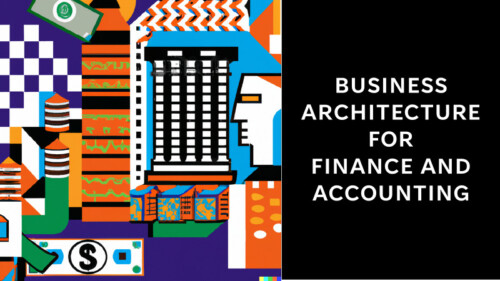
Business Architecture for Finance and Accounting
-
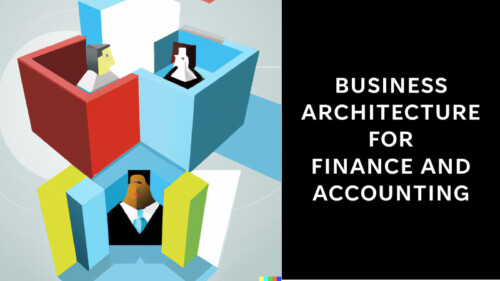
Business Architecture for Human Resources
-
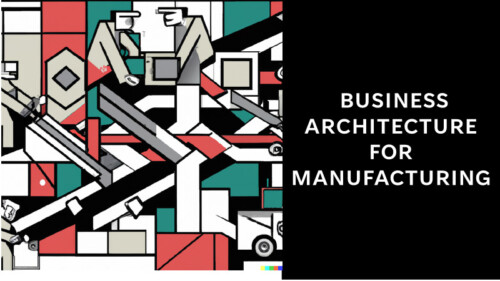
Business Architecture for Manufacturing Management
-

Business Architecture for Marketing
Building the Team
Mary Mapper stood in her office, surrounded by floor-to-ceiling windows. Her gaze was cast onto a large whiteboard covered in names, roles, and a constellation of interconnecting lines. It was her blueprint for building a team, the crew she would lead on this year-long business architecture voyage at GiantMegaCorp.
Mary understood the importance of a well-rounded team. So she sought out individuals who possessed technical skills, strategic thinking, and a propensity for innovation. “A group of the right minds can shape the destiny of an organization,” she often remarked.
An integral part of her team was Samantha Green, an experienced business analyst. Samantha was known for her sharp analytical skills and ability to connect dots that others often overlooked. As the lead business analyst, her role was to scrutinize business units, understand their functions, and identify areas of improvement.
Next in line was David Hill, a project manager with a history of delivering successful projects within stipulated timelines. David was a master at managing resources and ensuring everything went according to plan. He would steer the team through the project phases, ensuring all milestones were met on time.
Completing the core team was Bryan Hunt, a change management expert. Bryan was a people person. He understood that the project’s success depended on designing the architecture and ensuring that people were ready to embrace the Change. In addition, Bryan was responsible for preparing the organization for the impending transformation and minimizing resistance to Change.
Mary focused on fostering a dynamic and collaborative environment as the team came together. She encouraged open discussions, inviting ideas and solutions from all team members. However, as with any group of diverse individuals, there were early challenges. Disagreements over strategies, conflicting opinions, and a lingering resistance to Change were some of the hurdles they encountered.
“I can understand why you feel this way, Samantha,” Mary would say during heated discussions, “But let’s consider David’s point of view as well. Every perspective adds value to our overall strategy.”
Mary’s calm demeanor and astute leadership skills helped to navigate these turbulent waters, instilling a sense of unity and shared purpose within the team. They began appreciating each other’s strengths, learning from their differences, and working collaboratively towards their common goal.
Building the team was no small feat. It was a blend of different skills, perspectives, and personalities. But this diverse group was gradually transforming into a cohesive and efficient team under Mary’s leadership. It was the first significant milestone in Mary’s journey at GiantMegaCorp, and she knew it was only the beginning. As the team matured, so would their capability to handle the arduous task ahead. Finally, a unified GiantMegaCorp was starting to seem less like a far-off dream and more like an achievable reality.
Developing the Business Architecture Framework
The sound of a pencil scratching paper and the low hum of productive conversation filled Mary’s office. The team was huddled around a sprawling blueprint, the embryo of GiantMegaCorp’s future business architecture framework. The team’s discussions were punctuated by bursts of inspiration, thoughtful pauses, and an infectious excitement about the promise of what was to come.
The business architecture framework was not just a collection of processes, structures, and strategies. Instead, it was a blueprint that would guide GiantMegaCorp’s future trajectory. It boldly stated how the company would align its various parts to function as a harmonious, strategic whole.
One of Mary and her team’s first vital decisions was to adopt a ‘bottom-up’ approach to the business architecture. “Our framework needs to consider the unique workings and needs of each business unit,” Mary said during a brainstorming session. “Only then can we build an architecture that truly integrates the whole corporation?”
This decision was motivated by the understanding that GiantMegaCorp’s diverse business units had independently evolved their processes and systems. Therefore, these unique features had to be respected and incorporated into the business architecture to avoid resistance and ensure successful implementation.
After months of diligent work, the team finally had a prototype of the business architecture framework. This model was then presented to the stakeholders from various business units for feedback and initial testing.
“It’s comprehensive,” one of the unit heads admitted during the feedback session, “But we need to understand how it will affect our day-to-day operations and what kind of changes we’ll need to implement.”
Mary listened attentively, making notes of the concerns and suggestions. She understood that feedback was not a roadblock but an opportunity to refine the framework further. “Every piece of feedback is a gift. It provides us a perspective we might have missed,” Mary shared with her team.
Several adjustments were made to the framework based on the initial feedback and tests. They simplified some processes, tweaked certain structures, and added clarity to the overall architecture.
“Remember, our goal is to make the operations more efficient, not more complicated,” Mary reminded her team as they worked tirelessly to fine-tune the framework. “We need to create an architecture that’s robust yet flexible, one that can evolve as the company grows.”
Developing the business architecture framework was challenging, but with each revision and refinement, Mary and her team created something remarkable. Finally, they were shaping a framework to streamline GiantMegaCorp’s operations and steer it towards its strategic goals.
The journey was far from over, but as Mary looked at the updated business architecture framework, she felt a sense of accomplishment. They had climbed the first peak, and the view was promising. The next step was implementation, a challenge Mary and her team were ready to embrace.
Creating the Business Architecture Artifacts and Deliverables
Capstera Products for Business Architecture Acceleration
-

Business Architecture for Finance and Accounting
-

Business Architecture for Human Resources
-

Business Architecture for Manufacturing Management
-

Business Architecture for Marketing
With the business architecture framework taking shape, Mary Mapper and her team moved on to their next significant task – creating essential artifacts and deliverables. These artifacts were the tangible outputs of their labor, the building blocks that would turn their grand design into an operational reality.
One such crucial artifact was the Capability Map, a comprehensive view of GiantMegaCorp’s abilities across all its business units. Creating this involved deep diving into each business unit, understanding its operations, and listing its capabilities.
During a team meeting, Mary emphasized, “The Capability Map is more than just a list. It’s a strategic tool that provides insights into where we excel and where we need to bolster our abilities.”
 Another vital artifact was the Value Stream Map, a flowchart highlighting the processes contributing to the company’s value creation. This map was essential in identifying bottlenecks, redundancies, and areas of improvement in GiantMegaCorp’s operations.
Another vital artifact was the Value Stream Map, a flowchart highlighting the processes contributing to the company’s value creation. This map was essential in identifying bottlenecks, redundancies, and areas of improvement in GiantMegaCorp’s operations.
In developing these artifacts, Mary made strategic decisions to ensure their practicality and user-friendliness. She insisted on creating visual, intuitive designs that all stakeholders would easily understand.
“We’re not creating these artifacts for ourselves,” she told her team. “They need to be tools that every business unit can utilize and benefit from. Clarity and simplicity should be our guiding principles.”
With these artifacts ready, Mary presented them to the stakeholders. The room buzzed with curiosity and anticipation as Mary unveiled the Capability Map, the Value Stream Map, and other deliverables. Then, she walked them through each artifact, explaining their purpose and how to use them.
Reception was mixed initially. Some stakeholders struggled to understand the intricacies of the artifacts, while others were quick to see their value. “This is a new way of looking at our operations,” one of the business unit heads acknowledged, “It might take some time to get used to it, but I can see how this could drive our efficiency.”
Mary arranged training sessions and workshops to ease the transition, allowing stakeholders to familiarize themselves with the artifacts and ask questions. This approach increased their comfort level and solidified their commitment to the business architecture project.
Creating the artifacts and deliverables was a milestone in the business architecture journey. They were tangible proof of the progress made and the potential of what lay ahead. As Mary looked at the artifacts, she knew they were not just diagrams and flowcharts but the keys to unlocking GiantMegaCorp’s full potential. The next step was to put these tools to work and see how they could transform the corporate giant’s landscape.
Overcoming Stumbling Blocks
Every journey is dotted with obstacles, and Mary Mapper’s business architecture journey at GiantMegaCorp was no exception. Each hurdle, however, was not a setback but an opportunity for Mary to demonstrate her leadership skills and creative problem-solving abilities.
One of the first significant obstacles was resistance to Change. Many business unit heads and employees, accustomed to their methods and routines, hesitated to embrace the new architecture and artifacts. “We’ve been doing fine so far. Why do we need to change everything now?” was a question Mary often encountered.
Instead of dismissing these concerns, Mary addressed them head-on. “Change is never easy, but it’s necessary for growth,” she would explain. “We’re not uprooting your established processes but enhancing them so you can achieve your goals more efficiently.”
To overcome this resistance, Mary worked closely with Bryan, the change management expert on her team. They organized workshops, training sessions, and town hall meetings, ensuring everyone in the company understood the benefits of the new business architecture.
Another significant challenge was integrating different business units’ diverse systems and processes into a single cohesive framework. As a result, discrepancies and conflicts arose, threatening to disrupt the architecture implementation.
“When we try to harmonize different melodies, discord is inevitable,” Mary told her team during a brainstorming session. “But it’s through these conflicts that we can create a symphony.”
To address these conflicts, Mary adopted a collaborative approach. She facilitated discussions between the conflicting parties, encouraging them to find common ground and work towards a mutually beneficial solution.
Through these challenges, Mary and her team learned valuable lessons. For example, they realized the importance of clear communication, proactive problem-solving, and the necessity of gaining buy-in from all stakeholders. These lessons prompted modifications to their approach, with a stronger emphasis on communication and collaboration.
“We are not just architects of the business structure,” Mary reflected, “We are also architects of relationships and understanding. Our architecture will only be as strong as the trust and cooperation between the people who make up GiantMegaCorp.”
Overcoming obstacles was a testament to Mary’s resilience, leadership, and commitment to the business architecture project. Each challenge surmounted brought them a step closer to their goal. With newfound insights and strengthened resolve, Mary and her team were ready to face the rest of their journey, however winding the road might be.
Business Architecture in a Box – Training and Knowledge Transfer
The success of the business architecture largely depended on the people of GiantMegaCorp – the end-users of the artifacts and the implementers of the new practices. So Mary Mapper and her team developed an extensive training program to empower them.
“We’re not just introducing a new way of working,” Mary explained to her team. “We’re creating a cultural shift, and training is an essential part of it.”
The training program was meticulously designed, considering the different learning styles and the diverse roles of the employees. It included hands-on workshops, digital tutorials, and one-on-one coaching sessions. In addition, it focused on understanding the artifacts and cultivating the necessary skills to utilize them effectively.
One successful strategy Mary employed was the ‘train-the-trainer’ approach. They selected ambassadors from each business unit who were trained extensively. These ambassadors then coached their respective teams, making the training process more efficient and personalized.
“To ensure knowledge retention, we must ensure the training is relevant and relatable. Who better to deliver it than someone from their own team?” Mary reasoned.
Another critical strategy was incorporating real-life case studies and practical examples into the training. This approach helped the employees understand the practical application of the new practices and see their tangible benefits.
An example of this strategy’s success was Jack, a team lead from one of the business units. Initially skeptical about the changes, Jack found the hands-on training particularly enlightening. Then, working with actual data from his unit, he was able to see how the new Capability Map could help streamline his team’s operations.
“Before the training, I saw this as another corporate initiative that would complicate our work,” Jack admitted during a feedback session. “But now, I see how these tools can make our lives easier.”
Another case study was by Lisa, a project manager initially overwhelmed by the new Value Stream Map. However, through training, she not only mastered the artifact but also found innovative ways to use it to improve her project timelines.
Stories like Jack’s and Lisa’s were a testament to the training program’s success. In addition, they served as motivational examples for other employees, reinforcing the value of the training.
The training and knowledge transfer phase was more than just an instructional period. It was a time of transformation – a transition from apprehension to understanding, from doubt to confidence. With each training session, Mary and her team were equipping the employees with the knowledge and skills to navigate the new landscape of GiantMegaCorp. It was the dawn of a new era of empowered employees and streamlined operations.
Evaluating the Success of the Business Architecture Journey
As the sun set over the horizon of GiantMegaCorp’s headquarters, Mary Mapper found herself in her office, the room now filled with an air of anticipation. Finally, finally, it was time to evaluate the success of their business architecture project, to see whether their journey had indeed taken them to their desired destination.
Metrics were an essential part of this evaluation. Mary and her team had established key performance indicators (KPIs) at the project’s onset, including efficiency gains, cost savings, and improvements in strategic alignment across business units. These metrics would now serve as the yardsticks against which the project’s success would be measured.
One critical metric was the reduction in operational redundancy, measured by tracking overlapping tasks and processes before and after the implementation of the business architecture. Again, the results were encouraging, with significant reductions in redundancy across all business units, signaling a more streamlined operation.
Another key metric was the improvement in strategic decision-making, gauged by the increase in data-driven decisions made by the management. Again, introducing the Capability Map and the Value Stream Map made a remarkable impact in this area.
“We’ve become more informed and proactive in our decision-making process,” one of the business unit heads acknowledged during a review meeting. “The new tools have given us insights we didn’t have before.”
Compared to the goals set at the beginning, the results were promising. Efficiency had improved, costs had been reduced, and there was a noticeable alignment in the company’s strategy. The business architecture project was not just a theoretical success; it produced tangible results.
Feedback from within GiantMegaCorp was positive overall. After initial skepticism, employees and unit heads embraced the new architecture, seeing the practical benefits in their daily work.
Externally, the project had garnered attention too. Industry experts commended GiantMegaCorp’s innovative approach, and the company found itself setting trends in business architecture implementation. “GiantMegaCorp has set a new benchmark for business architecture,” a feature article in a renowned business magazine stated.
As Mary looked at the numbers, the feedback, and the changes around her, she felt a sense of pride. The journey had been challenging, but they had reached a milestone that validated their hard work and showcased the transformative power of effective business architecture.
But Mary knew that the journey didn’t end there. The evaluation of success wasn’t just a pat on the back; it was a stepping stone to future improvements, further refining the architecture and continuing GiantMegaCorp’s evolution. For now, though, it was a moment to pause, reflect, and appreciate the fruits of their labor.
Capstera Products for Business Architecture Acceleration
-

Business Architecture for Finance and Accounting
-

Business Architecture for Human Resources
-

Business Architecture for Manufacturing Management
-

Business Architecture for Marketing
The Power of Change Management
Just as the architecture of a building guides its construction, business architecture guides the structure and operations of an organization. However, the true strength of any architecture lies in its adaptability – the ability to change and evolve with time. This adaptability is powered by effective change management.
Mary Mapper, a seasoned business architect, was acutely aware of the significance of change management. “Our architecture is like a living organism, and change is its lifeblood,” she explained to her team. “Without change management, our architecture becomes a static diagram, unable to adapt and grow.”
To foster Change within GiantMegaCorp, Mary devised a robust change management strategy. This strategy was rooted in clear communication, continuous learning, and stakeholder involvement.
Communication was at the heart of Mary’s change management approach. She strived to create a transparent environment where the rationale behind every Change was clearly explained, and every question, concern, or idea was welcomed. “Everyone has a voice in this journey,” Mary often emphasized, “and every voice matters.”
Continuous learning was another pillar of Mary’s change management strategy. She created a continuous improvement and adaptation culture from the training sessions to the real-time feedback loop. “Learning is not a one-time event; it’s a continuous process,” Mary told her team. “We must always be open to learning and evolving.”
Finally, Mary believed in the power of stakeholder involvement. Rather than imposing changes from the top down, she ensured all stakeholders had a say in the transformation process. This approach not only fostered a sense of ownership among the stakeholders but also provided the changes were realistic and suited the needs of each business unit.
The impact of these change management practices on GiantMegaCorp’s operations was profound. The once rigid, compartmentalized company had become a fluid, integrated entity. As a result, employees were more engaged and proactive, and the business units were more aligned with the company’s strategic goals.
“There’s a new energy in the company,” observed Bryan, the change management expert on Mary’s team. “People are not just going through the motions; they’re actively shaping the future of GiantMegaCorp.”
The transformation was a testament to the power of change management. It showed that business architecture was not just about designing systems and processes but about fostering a culture that embraces Change, promotes learning, and values every stakeholder’s contribution.
Reflecting on the journey, Mary noted, “Change is not a challenge to be feared, but an opportunity to be seized. The right approach can be the driving force that propels an organization towards its true potential.”
Through the lens of change management, Mary Mapper transformed GiantMegaCorp, setting it on a path of continuous evolution and growth. It was a testament to her belief that the true power of business architecture lies not in the blueprints but in the people who bring those blueprints to life.
The Long-term Impact of Building Blocks
Implementing a business architecture is not a sprint but a marathon, a process that leaves lasting imprints on the organization. As the dust settled on the initial implementation phase at GiantMegaCorp, the actual long-term effects of Mary Mapper’s work began to emerge.
The effects were strikingly clear in the company’s strategic direction. Guided by business architecture principles, GiantMegaCorp had begun to navigate its path with more clarity and focus. The alignment across business units had improved, resulting in a more streamlined operation. In addition, the new Value Stream Map and Capability Map have become essential tools for strategic planning and decision-making.
“Mary’s work has become a compass for our strategic direction,” said GiantMegaCorp’s CEO during an annual review meeting. “It’s no longer about isolated decisions; it’s about a cohesive, coordinated approach that moves the entire company forward.”
The long-term impact was also visible in the everyday lives of GiantMegaCorp’s employees. The newly designed processes, guided by the business architecture framework, had reduced redundancy and improved efficiency. As a result, employees spent less time navigating bureaucratic hurdles and more time on creative, value-added tasks.
Emma, a marketing executive, was one such employee. “I used to spend hours weekly coordinating with different teams, clarifying misunderstandings,” she said. “But with the new business processes, it’s become much easier. As a result, I have more time to focus on my core tasks.”
The transformation of Sam, a mid-level manager, was another case in point. Before the project, Sam struggled to align his team’s goals with the company’s strategy. But with the introduction of the Capability Map, he found a tool that helped him make sense of the bigger picture. “It’s like I’ve been given a map to navigate the company’s strategic landscape,” Sam said. “It has made my job much easier and more meaningful.”
It wasn’t just the employees who were reaping the benefits. The long-term impact was trickling down to GiantMegaCorp’s bottom line too. Efficiency gains and cost savings resulting from the new architecture led to a noticeable increase in profitability, signaling a promising future for the company.
In the end, the long-term impact of Mary’s work was not just about better processes, tools, or financial metrics. It was about creating a lasting culture change that empowered employees, fostered collaboration, and propelled GiantMegaCorp toward its strategic goals. It was a change that echoed Mary’s philosophy: “Architecture is not just about the structure; it’s about the people who thrive within that structure.”
In the grand tapestry of GiantMegaCorp’s journey, Mary Mapper had woven a lasting pattern of efficiency, synergy, and growth. The long-term effects of her work were more than just visible; they had become an integral part of GiantMegaCorp’s identity.
Reflections and Future Directions
As Mary Mapper sat in her office, she took a moment to reflect on the journey. The walls of her office were adorned with remnants of the project – diagrams of the business architecture, photos of her team, sticky notes filled with ideas, and letters of appreciation. These were not just memories but milestones marking the transformative journey she had undertaken with GiantMegaCorp.
“It’s been a remarkable journey,” Mary said, looking out over the bustling office floor, “a journey filled with challenges, triumphs, and above all, learning.”
Reflecting on the outcomes, Mary was proud of what they had achieved. She remembered the initial skepticism and resistance and compared it to the acceptance and enthusiasm. The transformation was a testament to the power of business architecture and her team’s strength.
“There were obstacles, yes,” Mary said, “but every obstacle was an opportunity – an opportunity to learn, to adapt, and to grow.”
But Mary knew that the journey was far from over. The business architecture they had put in place was not set in stone; it was a living, evolving entity that needed to adapt to the ever-changing business environment. So Mary’s vision for the future was clear: continuous improvement and evolution.
“The essence of architecture is adaptability,” she stated. “We’ve built a solid foundation, but our work is far from done. We need to continue evolving, continue learning.”
And for others looking to embark on a similar journey, Mary had some advice to share. “Don’t be deterred by the complexity or the resistance,” she said. “The path may be challenging, but the destination is worth it.”
“Remember,” she added, “business architecture is not just about designing processes or structures. It’s about understanding the heartbeat of the organization – its people. Listen to them, involve them, and empower them. They are the ones who will bring your architecture to life.”
Finally, Mary advised other business architects to remain patient and persistent. “Change takes time,” she said. “Be patient with the process, persistent with your efforts, and above all, be resilient. Every challenge, every setback is an opportunity to learn and grow.”
As Mary Mapper looked to the future, she saw a promising horizon filled with potential, growth, and continued evolution. Her journey with GiantMegaCorp was a testament to her conviction and commitment. It was a story of transformation, not just of a company but of the people within it.
In business architecture, Mary Mapper was not just a name but a beacon, guiding others toward their potential and illuminating the path toward effective and meaningful business architecture.
If you are on a business architecture journey and need help, contact Capstera Consulting.
Business Architecture Products You Could Use:
-

Business Architecture for Finance and Accounting
-

Business Architecture for Human Resources
-

Business Architecture for Manufacturing Management
-

Business Architecture for Marketing


